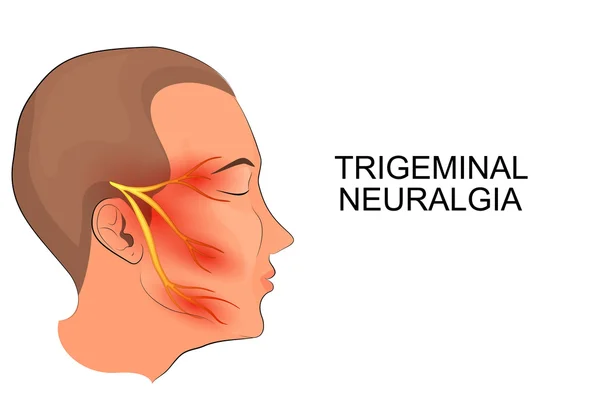A painful condition called trigeminal neuralgia that impacts people facial area may begin as an infrequent, sporadic twinge along the face. When this facial nerve pain increases, a person’s daily activities like chewing, speaking, taste, or even a light touch to the area can trigger excruciating pain.
The pain’s source is the pair of trigeminal nerves that function along each side of your face. Each nerve has three individual branches that deliver nerve sensations to the upper, middle and lower areas of your face and jaw.
A fatty, insulating covering on human nerves called the myelin sheath. When it becomes injured, it is usually due to an artery or vein pressing against it. This may trigger hypersensitive to the nerve’s stimuli and relay pain at even the slightest jar or prompt. Chronic pain may develop if it also continues to transmit injured pain signals even after the stimulation that caused it is over.
The National Institute of Neurological Disorders and Stroke reports that annually approximately 150,000 people find out they suffer from this condition. Most are women over the age of 50. Trigeminal neuralgia typically strikes spontaneously; however, it can be associated with facial trauma or dental procedures. For example, the trigeminal nerve and its peripheral branches are susceptible to injury in the practice of some dental root canals, depending on the area of surgery and each person’s unique nerve pattern. Facial nerve pain may be caused by a resulting blood vessel pressing against the trigeminal nerve, also termed “vascular compression”.
Patients report that this reactive nerve pain can go from zero to an 8 or 10 excruciating pain, if asked on a level of 1-10 (10 being the highest).Because people are more familiar with an infected tooth they often assume that is the cause and the symptoms will go away with a fill.
However, when it persists like an electric shock type of facial pain, it means you need your dentist to refer you to a pain specialist or physician. If the complex Trigeminal neuralgia nerve is responsible for sending the agonizing pain, touch and temperature sensations from your face to your brain, an oral facial pain specialist is needed.
Take note of the following and provide a report when you see the specialist:
- When the pain first begin.
- When the pain come back and if more frequent.
- If the pain is sudden, brief, or lingering.
- If certain parts of your face seem to be most affected by pain.
- If something seems to consistently trigger it. For example, was it brought on by eating, talking, touching your face or even set-off by a cool breeze.
When you see your doctor or pain specialist for an exam, your answers can help determine which branches of the trigeminal nerve may be affected. Because it can be caused by multiple conditions, an accurate diagnosis is important for determining the best treatment plan.
People sometimes ask if stress alone can cause trigeminal neuralgia. While stress can aggravate the condition, it is not widely believed to cause it. More research and understanding about how or why facial nerve pain occurs is needed. However, one possibility is the relationship between stress and the escalation of pain. Studies indicate that chronic pain can be a frontrunner to stress-induced heightened pain sensitivity.
When left untreated and quite severe, this medical condition is more challenging to cure. Still, there are effective ways that pain clinics can manage it. One conservative method is with medications that block the nerve from transmitting pain signals to the patient’s brain, in addition to physical therapy that helps stabilize the damaged nerve and decrease abnormal firing.
To learn the best non-invasive treatment options for you, an in-office neurological exam can verify if trigeminal neuralgia exists and rule out other possible causes. A medical team that includes an orofacial pain specialist can decide the best treatment plan for your age and overall individual health condition. To treat trigeminal neuralgia, your healthcare team usually will prescribe medications to lessen or block the pain signals sent to your brain.
Muscle-relaxing medication such as baclofen (Gablofen, Lioresal, Ozobax) may be prescribed alone or in combination with carbamazepine. However, unwanted side effects may include confusion, nausea and drowsiness. Small studies indicate that Botox injections may reduce pain from trigeminal neuralgia in people who seek alternative treatment if medications seem to be insufficient. However, further research needs to be concluded before this treatment is widely used for this condition.
If needed, surgical options for trigeminal neuralgia may be recommended. The condition can be quite unpleasant experience. But it is one that is manageable or at least minimalized.
If you would like more information on facial nerve pain, you can contact the Minnesota Head & Neck Pain Clinic for a consultation or referral at (763) 577-2484. You can also learn more about this topic by reading our “Facial Nerve Pain: Diagnosis and Treatment” article.








